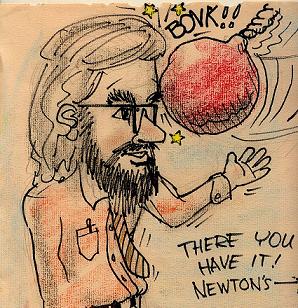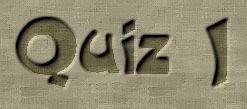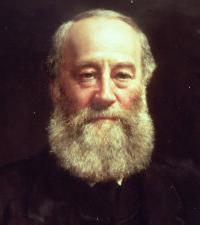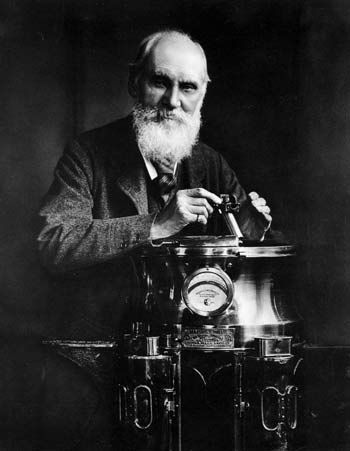 |
Prof. Rory Coker Office: RLM 8.312 Phone: (512) 471-5194 Fax: (512) 471-9637 Email: rory coker's civilian mail, coker's physics department mail Office Hours: Fall 2018, Tuesday, 1 to 2 PM; Friday, 3:30 - 4:30 PM; RLM 8.312 [Subject to change.] |
|
|
The Fall 2018 unique number is 55480, and the class meets 2 to 3 PM on MWF in Pai 4.42. Attendance is REQUIRED in class, and the roll will be checked each day. If you need personal help with the homework and are on campus, the Coaching tables by the elevators on the 5th level of RLM Hall will be manned daily. The TA is Wei-Jin Zheng, office hours: Monday 3-4pm, RLM 14.318, and weekly problem session: Friday 3-4pm, RLM 5.122 Text: COLLEGE PHYSICS (9th ed)
by Serway and Vuille, Vol. 2 (Brooks-Cole,
2012). Earlier or later editions will
work. This course and text cover basic
physics using algebra and trig but not
calculus. You should probably not be taking
this course if you are majoring in science or
engineering. Science majors take
calculus-based Phy 301, 315, 316 while engineers
take calculus-based Phy 303K and L. Also Phy
317K and L are survey courses like 302K and L, but
using calculus. 302L covers important topics
in fundamental physics, beginning with the gradual
understanding of one of the four fundamental
forces of nature, the electrical force, in the
late 1700s, and ending with a quick survey of late
20th and early 21st century physics. The homework for this course is
handled by the Quest on-line homework service.
Homework assignments are turned in by you on-line
from your web-browser, logging-in with your UT-EID
from https://quest.cns.utexas.edu/.
An FAQ page is available
here. Complete homework and quiz solutions
are available on Quest within 15 minutes or half an
hour after the deadline. Quest requires a $30
charge per student for its use, these funds
going toward the maintenance and operation of
the resource. After the 12th day of class, when you
log into Quest you will be asked to pay via credit
card on a secure payment site. You have the option
to wait up to 30 days to pay while still continuing
to use Quest for your assignments. If you are taking
more than one course using Quest, you will not be
charged more than $60/semester. For payment
questions, email Quest
Fees. SO FAR: As of assignment 12,
only an average of 70 out of 82 enrolled students
are turning in homework. The number has usually
fluctuated between 70 and 75. Remember that
homework constitutes 40% of the overall class
grade! Looking over the grades so far, I can
find 5 students who are not taking the exams and
not turning in homework, and have course letter
grades of D or F. RUNNING TABLE OF HOMEWORK DUE DATES AND TIMES:
Here is a way to get extra credit! Some useful hints on how to study physics. [Author unknown.] Hints on how
to
take notes in a physics class. [Author
unknown.] Here is the Golden Rule of physics problem-solving. Ignore it at your extreme peril. How to get involved in Undergraduate Research. Interactive Animations of Basic Physics Concepts Important: the Laboratory Course 102N is a REQUIRED CO-REQUISITE for 302L. It is your responsibility to register for and take the lab, simultaneously with 302L, unless you have already taken and passed it in a previous semester. COACHES AND TUTORS: Coaches are present at tables by the elevators on the 5th level of RLM, at various times between 8 AM and 6 PM weekdays. Coaches are there to give you hints on homework problems, and mini-lectures on key concepts in basic physics. You can obtain a physics graduate student tutor by contacting the undergraduate secretary, whose office is around the North corner from the coaching tables on the 5th level. If you are experiencing any difficulties in doing the homework you probably need a tutor, and you would need to work with him or her beginning as early as possible in the semester. Note that free tutoring is available here. And free study group tutoring is available here. A fairly accurate but incredibly difficult to read online resource on basic physics is here. CLASS NOTES FOR 302L: Here. CLASS SLIDES FOR 302L: Ch. 15, part 1, Ch. 15, part 2, Ch. 15 part 3, Capacitors, Direct Current, Direct Current Circuits, Magnetic Field, Magnetic Forces, Field of currents, Magnetic Materials, Induction, Self-Induction, AC Circuits, EM radiation, EM Spectrum, Red Shift! Ray Optics 1, Refraction, Rainbow, etc. Mirrors1, Convex Mirrors, Air Optics, Lenses, Double Slit! Thin films, Single Slit and Grating, Polarization, Optical Devices, Eye and brain? Relativity 1, Relativity 2, Twins! Length Contraction! Binding Energy, Einstein's Theory of Gravity, Quantum 1, Quantum 2, Atoms, Spin and Pauli Principle, Molecules and Solids, X rays and Lasers, Nuclear1, Nuclear2, Radiation, Fission and Fusion, The Standard Model, [From other courses: The Sun, Particles! The Proton, Early Universe, THE DARK!] CLASS SLIDES FOR 302K: Motion, Kinematics, Free Fall, Vectors 1, Vectors 2, Unit Vectors, Projectiles, Projectile Relativity, Estimating Acceleration, Centripetal Acceleration, Radial and Tangential, Relative velocity, All Three Laws, The Dark! Friction, Roller Coaster, Conical Pendulum, Work, Energy's Fathers, Kinetic Energy, PE and E, Conservative forces, Drawing the PE, CE and Mass, Deuteron, Then and Now, Satellites, Orbits, Planet Men, Dark Matters! Gravitational Potential Energy, Center of Mass, Geometrical Center, Stability, Equilibrium, Total Momentum, CM and Orbits, Impulse! Elastic and Inelastic Collisions, Where is it? Angular Velocity, Rotational Inertia, Rotational KE, Torque, Rolling, Rotational Inertia Race, Angular Momentum, Torque and Angular Momentum, Precession, Stable and Unstable Rotations, Statics, Atomic forces, Young's, shear and bulk moduli, SHO, Waves, Reflection, Superposition, Standing waves on rope, Group velocity, Wave Applets, Fathers of the Wave, Sound, Spherical waves, Standing waves in pipes, Doppler effect, Sound level, Diffraction, Chladni Plates, Pressure, Pascal Principle, Buoyancy, Bernoulli Principle, Fathers of fluid physics, Thermal Physics! Heat! Engines When physics lecture demonstrations go wild.
Enrico Fermi
|






